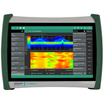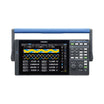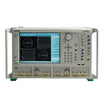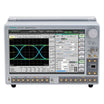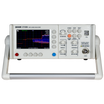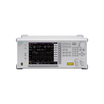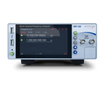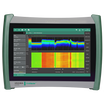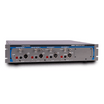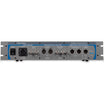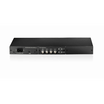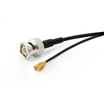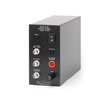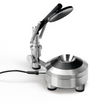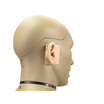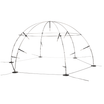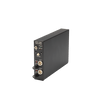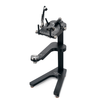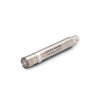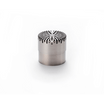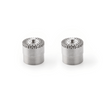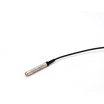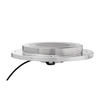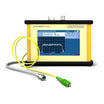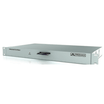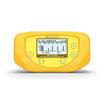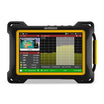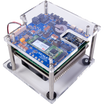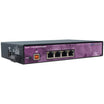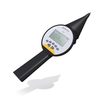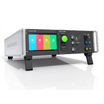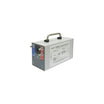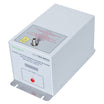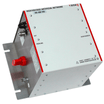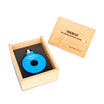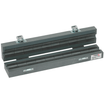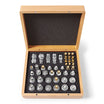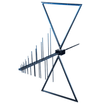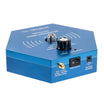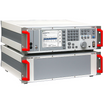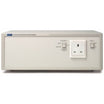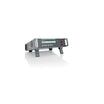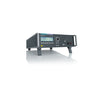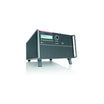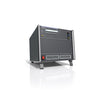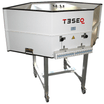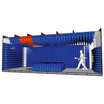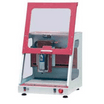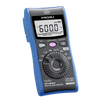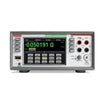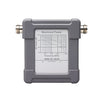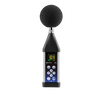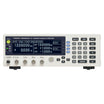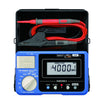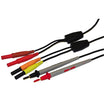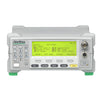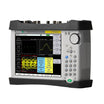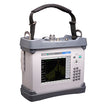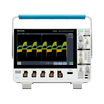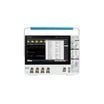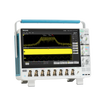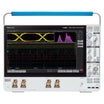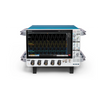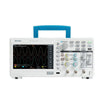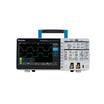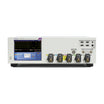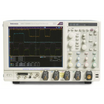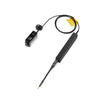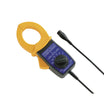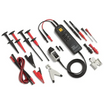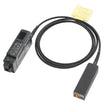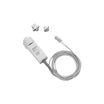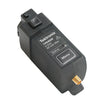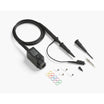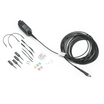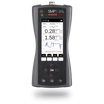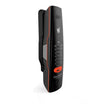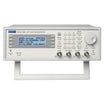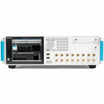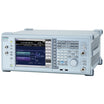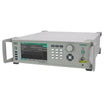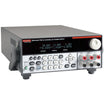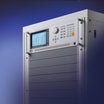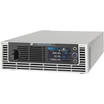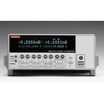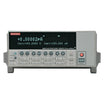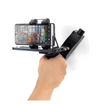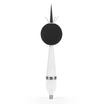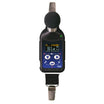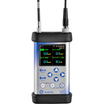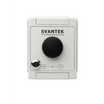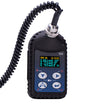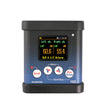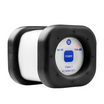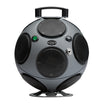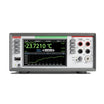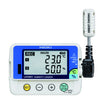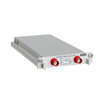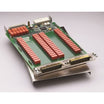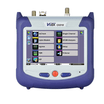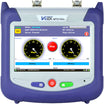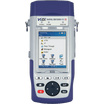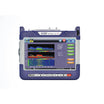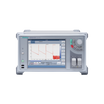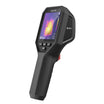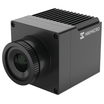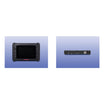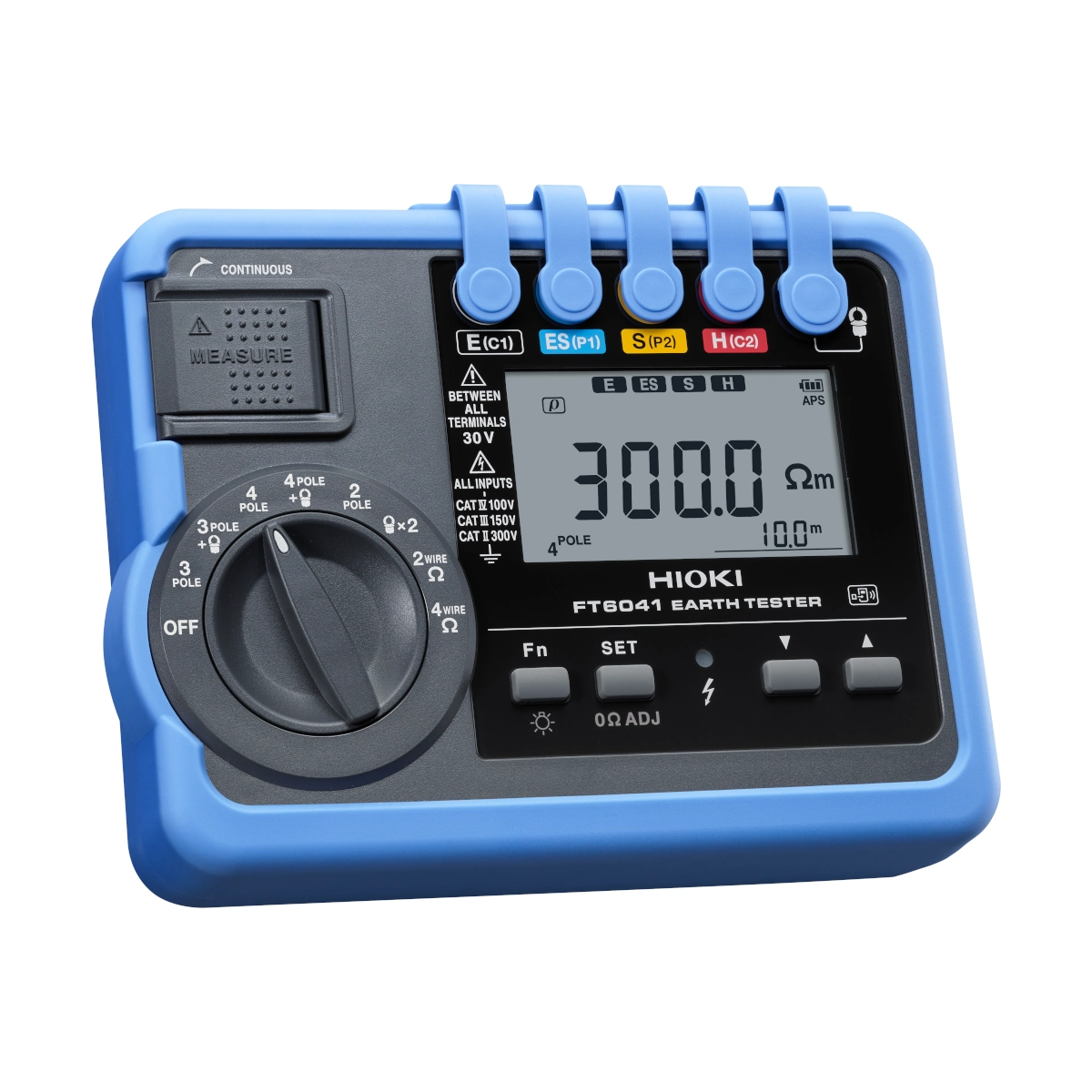
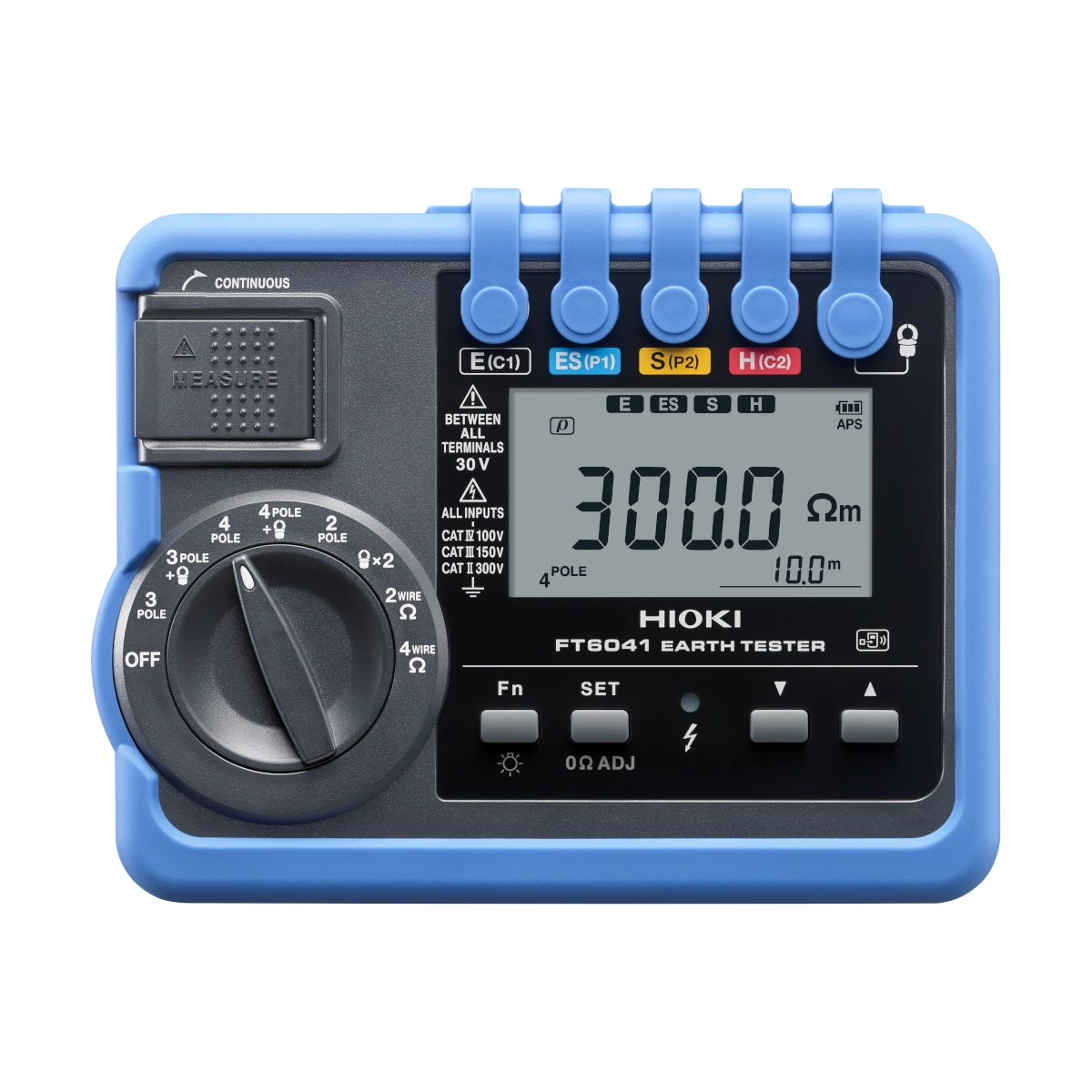
Hioki FT6041 Earth Tester
Use our chat for personal support or contact us via +45 31 33 18 19 or salg@GOmeasure.dk
- Field-capable, Fast-working
- Extensive measurement functionality
- FT6041 with included accessories
Discover the possibilities
More information
Description
CAT IV 100 V, CAT III 150 V, CAT II 300 V
Extensive measurement functionality: choose the right measurement method for any application
− 4-pole method (Wenner's 4-pole method):
Measure soil resistivity when surveying a grounding design
− 3-pole method:
Precisely measure ground resistance
− MEC (Measuring Earth with a Clamp) function:
Measure ground resistance without disconnecting ground electrodes
− 3-pole method using 4-terminal measurement:
Measure ground resistance values of several ohms or less
− 2-clamp method:
Measure grounding resistance at multiple grounds
− Low-resistance measurement:
Continuity test after ground resistance measurement
Key Features
- Compatible with 4-pole method
- Measure ground resistance without disconnecting ground electrodes
- IP67 protected, built tough to withstand use at harsh sites
- Make measurements, even on concrete by using Earth Nets Module
- Fast measurement! Cord rewinding that doesn’t tangle or twist
- Clamp sensor (optional) to fit both narrow and wide bus bars
- Easily transfer measurement data to your smartphone or tablet by using our free app GENNECT Cross or to an Excel® file. (Wireless Adapter Z3210 is necessary)
Measure ground resistance without disconnecting ground electrodes: MEC(*) function
This function augments the 3-pole method with current measurement using a clamp sensor. By measuring only current flowing to the grounding electrode you wish to measure, you can avoid the effects of other grounds. This capability can substantially reduce man-hours spent on measurement work.
*MEC stands for "measuring earth with a clamp."
Measure soil resistivity when surveying a grounding design by 4-pole method
Soil resistivity is measured as part of the grounding design process in advance of building design. Soil resistivity varies with each site’s geological properties. In this process, optimal ground locations as well as grounding electrode shapes, dimensions, and other characteristics are designed based on the assessed soil resistivity.
Built tough to withstand use at harsh sites
- Dirt, sand, and rain resistance, IP67 dust and water protection Since the Earth Tester FT6041 is designed to keep dust and dirt out of its enclosure, you can use it in the field without worrying about mud or dust. If it gets dirty, simply rinse it off with water.
- Operating temperature range -25°C to 65°C
Extreme cold, extreme heat. The FT6041 won’t fail, even during extended operation.
- Drop-proof design 1 m with protector attached
Withstands being dropped onto concrete from a height of 1 m
- Excellent noise resistance, Allowable ground potential: 30.0 V RMS
Even in an environment where the ground potential is 30.0 V RMS, stable ground resistance can be measured.
Designed to shorten work times and reduce operator workload
- Fast measurement! Cord rewinding that doesn’t tangle or twist
The combination of fast measurement that displays measured values in just 6 seconds (3-pole method) and easy-to-use cord rewinding shortens work times.
- Insert just once thanks to 100 kΩ max. allowable resistance
High “allowable resistance of auxiliary grounding electrode” eliminates the inconvenience of needing to insert and reinsert auxiliary electrodes repeatedly in dry soil. The result is shorter work times.
- Make measurements, even on concrete. Newly designed Earth Nets Module L9846
This module is essentially an auxiliary electrode for flat surfaces in which the traditional stakes can’t be inserted. When opened, two copper nets make contact with the surface. Simply make contact and pour water over it to measure ground resistance without inserting any auxiliary electrodes into the ground.
Unique clamp sensor for tight spaces
Earth electrodes are located at the tight spaces. On top of that, some bus bars are also thick. The CT9848 clamping sensor can be used to clamp those points.
The thin, wide bore jaws allow for smooth clamping of the ground electrodes.
Wireless support - It transfers measurements to your smartphone or tablet
Compatible with Wireless Adapter Z3210 (optional). It transfers measurements to your smartphone or tablet and allows you to quickly create reports with field photos and drawings.
GENNECT Cross, a free app designed specifically for use with Hioki measuring instruments, lets you check and manage measurement results and create reports.
The software provides a range of functionality that helps manage data in the field, including photographing measurement sites, placing measurement results on photographs, and saving hand written memos.
Specifications
Basic specifications
| Measurement parameters | • Ground resistance measurement: 4-pole method, 3-pole method, 2-pole method, MEC function, clamp-on measurement (two clamps) • Soil resistivity measurement: 4-pole method • Low-resistance measurement: 4-terminal method, 2-terminal method • Ground potential measurement |
|---|---|
| Ground potential | 0 to 30.0 V RMS, accuracy: ±2.3% rdg. ±8 dgt. (50/60 Hz), ±1.3% rdg. ±4 dgt. (DC) |
| Functions | Live wire warning, auto power save, soil resistivity display (4-pole method only), zero-adjustment, auto-hold, continuous measurement mode, wireless communication (only when Z3210 is connected), buzzer sound, comparator, switching the display, ground potential overload display (when measuring ground resistance) |
| Operating temperature and humidity | -25°C to 65°C (*1) (non-condensing) |
| Storage temperature and humidity | -25°C to 65°C: 80% RH or less (non-condensing) |
| Dustproof and waterproof | IP65, IP67 (EN60529) |
| Standards | EN61010 (safety), EN61326 (EMC), EN61557-1/EN61557-10/EN61557-14 (low-resistance measurement, earth testers), EN61557-5 (earth testers) |
| Power supply | HR6 nickel-metal hydride battery x 4 or LR03 alkaline battery × 4 |
| Number of measurements per battery charge (*2) | 500 times (3-pole method, without Z3210 installed) 400 times (3-pole method, with Z3210 installed and using wireless communication) |
| Dimensions and weight | Approx. 189 mm (7.44 in.)W × 148 mm (5.83 in.) H × 48 mm (1.89 in.) D, approx. 765 g (26.98 oz.) (including battery, protector) |
| Included accessories | Auxiliary Earthing Rod L9840 (2 piece set) ×2, Measurement Cable L9845-31 ×1, Measurement Cable L9845-33 ×1, Measurement Cable L9845-52 ×1, Measurement Cable L9841 ×1, Test Lead L9787 ×1, Earth Nets Module L9846 ×2, Carrying Case C0208 ×1, Carrying Case C0209 ×1, Protector ×1, LR6 Alkaline battery ×4, Instruction manual ×1, Operating precautions ×1 |
*1:-25°C to 40°C, -13°F to 104°F (80% RH or less), 40°C to 45°C, 104°F to 113°F (60 % RH or less), 45°C to 50°C, 113°F to 122°F (50% RH or less), 50°C to 55°C, 122°F to 131°F (40% RH or less), 55°C to 60°C, 131°F to 140°F (30% RH or less), 60°C to 65°C, 140°F to 149°F (25% RH or less)
*2:NiMH battery x 4 (reference value at 23°C)
Ground resistance measurement: 4-pole method, 3-pole method, 2-pole method
| Measurement principle | Apply voltage and measure voltage and current (measures effective resistance by synchronous detection) | |||||
|---|---|---|---|---|---|---|
| Ground resistance range | 3 Ω (0 to 3.000 Ω) | 30 Ω (0 to 30.00 Ω) | 300 Ω (30.0 Ω to 300.0 Ω) | 3000 Ω (300 Ω to 3000 Ω) | 30.00 k Ω (3.00 k Ω to 30.00 k Ω) | 300.0 k Ω (30.0 k Ω to 300.0 k Ω) |
| Accuracy | — | ±1.5% rdg. ±6 dgt | ±1.5% rdg. ±4 dgt. | |||
| Allowable resistance of auxiliary grounding electrode | 5 kΩ | 50 kΩ | 100 kΩ | |||
| Allowable ground potential | 30 V RMS or 42.4 V peak | |||||
MEC function: 4-pole method with clamp sensor, 3-pole method with clamp sensor
| Measurement principle | Apply voltage and measure voltage and current (measures effective resistance by synchronous detection) | |||
|---|---|---|---|---|
| Ground resistance range | 30 Ω (0.00 to 30.00 Ω) | 300 Ω (30.0 Ω to 300.0 Ω) | 3000 Ω (300 Ω to 3000 Ω) | 30.00 k Ω (3 k Ω to 30.00 k Ω) |
| Accuracy | ±5% rdg. ±6 dgt. | ±5% rdg. ±3 dgt. | ||
Ground resistance measurement: 2-clamp method
| Measurement principle | Apply voltage and measure voltage and current (measures effective resistance by synchronous detection) | ||
|---|---|---|---|
| Ground resistance range | 20 Ω (0.02 Ω to 20.00 Ω) | 200 Ω (20.0 Ω to 200.0 Ω) | 500 Ω (200 Ω to 500 Ω) |
| Accuracy | ±7% rdg. ±3 dgt. | ±35% rdg. | |
Low-resistance measurement
| Open-circuit voltage | 4.0 V to 6.9 V | ||
|---|---|---|---|
| Measuring current | 200 mA or more | ||
| Measurement range | 30 Ω (0.00 to 30.00 Ω) | 300 Ω (30.0 Ω to 300.0 Ω) | 3000 Ω (300 Ω to 3000 Ω) |
| Accuracy | ±3 dgt. (0.00 to 0.19 Ω) ±2% rdg. ±2 dgt. (0.20 Ω to 10.00 Ω) | ±2% rdg. ±2 dgt. | |
Documents
Options
Video
CAT IV 100 V, CAT III 150 V, CAT II 300 V
Extensive measurement functionality: choose the right measurement method for any application
− 4-pole method (Wenner's 4-pole method):
Measure soil resistivity when surveying a grounding design
− 3-pole method:
Precisely measure ground resistance
− MEC (Measuring Earth with a Clamp) function:
Measure ground resistance without disconnecting ground electrodes
− 3-pole method using 4-terminal measurement:
Measure ground resistance values of several ohms or less
− 2-clamp method:
Measure grounding resistance at multiple grounds
− Low-resistance measurement:
Continuity test after ground resistance measurement
Key Features
- Compatible with 4-pole method
- Measure ground resistance without disconnecting ground electrodes
- IP67 protected, built tough to withstand use at harsh sites
- Make measurements, even on concrete by using Earth Nets Module
- Fast measurement! Cord rewinding that doesn’t tangle or twist
- Clamp sensor (optional) to fit both narrow and wide bus bars
- Easily transfer measurement data to your smartphone or tablet by using our free app GENNECT Cross or to an Excel® file. (Wireless Adapter Z3210 is necessary)
Measure ground resistance without disconnecting ground electrodes: MEC(*) function
This function augments the 3-pole method with current measurement using a clamp sensor. By measuring only current flowing to the grounding electrode you wish to measure, you can avoid the effects of other grounds. This capability can substantially reduce man-hours spent on measurement work.
*MEC stands for "measuring earth with a clamp."
Measure soil resistivity when surveying a grounding design by 4-pole method
Soil resistivity is measured as part of the grounding design process in advance of building design. Soil resistivity varies with each site’s geological properties. In this process, optimal ground locations as well as grounding electrode shapes, dimensions, and other characteristics are designed based on the assessed soil resistivity.
Built tough to withstand use at harsh sites
- Dirt, sand, and rain resistance, IP67 dust and water protection Since the Earth Tester FT6041 is designed to keep dust and dirt out of its enclosure, you can use it in the field without worrying about mud or dust. If it gets dirty, simply rinse it off with water.
- Operating temperature range -25°C to 65°C
Extreme cold, extreme heat. The FT6041 won’t fail, even during extended operation.
- Drop-proof design 1 m with protector attached
Withstands being dropped onto concrete from a height of 1 m
- Excellent noise resistance, Allowable ground potential: 30.0 V RMS
Even in an environment where the ground potential is 30.0 V RMS, stable ground resistance can be measured.
Designed to shorten work times and reduce operator workload
- Fast measurement! Cord rewinding that doesn’t tangle or twist
The combination of fast measurement that displays measured values in just 6 seconds (3-pole method) and easy-to-use cord rewinding shortens work times.
- Insert just once thanks to 100 kΩ max. allowable resistance
High “allowable resistance of auxiliary grounding electrode” eliminates the inconvenience of needing to insert and reinsert auxiliary electrodes repeatedly in dry soil. The result is shorter work times.
- Make measurements, even on concrete. Newly designed Earth Nets Module L9846
This module is essentially an auxiliary electrode for flat surfaces in which the traditional stakes can’t be inserted. When opened, two copper nets make contact with the surface. Simply make contact and pour water over it to measure ground resistance without inserting any auxiliary electrodes into the ground.
Unique clamp sensor for tight spaces
Earth electrodes are located at the tight spaces. On top of that, some bus bars are also thick. The CT9848 clamping sensor can be used to clamp those points.
The thin, wide bore jaws allow for smooth clamping of the ground electrodes.
Wireless support - It transfers measurements to your smartphone or tablet
Compatible with Wireless Adapter Z3210 (optional). It transfers measurements to your smartphone or tablet and allows you to quickly create reports with field photos and drawings.
GENNECT Cross, a free app designed specifically for use with Hioki measuring instruments, lets you check and manage measurement results and create reports.
The software provides a range of functionality that helps manage data in the field, including photographing measurement sites, placing measurement results on photographs, and saving hand written memos.
Basic specifications
| Measurement parameters | • Ground resistance measurement: 4-pole method, 3-pole method, 2-pole method, MEC function, clamp-on measurement (two clamps) • Soil resistivity measurement: 4-pole method • Low-resistance measurement: 4-terminal method, 2-terminal method • Ground potential measurement |
|---|---|
| Ground potential | 0 to 30.0 V RMS, accuracy: ±2.3% rdg. ±8 dgt. (50/60 Hz), ±1.3% rdg. ±4 dgt. (DC) |
| Functions | Live wire warning, auto power save, soil resistivity display (4-pole method only), zero-adjustment, auto-hold, continuous measurement mode, wireless communication (only when Z3210 is connected), buzzer sound, comparator, switching the display, ground potential overload display (when measuring ground resistance) |
| Operating temperature and humidity | -25°C to 65°C (*1) (non-condensing) |
| Storage temperature and humidity | -25°C to 65°C: 80% RH or less (non-condensing) |
| Dustproof and waterproof | IP65, IP67 (EN60529) |
| Standards | EN61010 (safety), EN61326 (EMC), EN61557-1/EN61557-10/EN61557-14 (low-resistance measurement, earth testers), EN61557-5 (earth testers) |
| Power supply | HR6 nickel-metal hydride battery x 4 or LR03 alkaline battery × 4 |
| Number of measurements per battery charge (*2) | 500 times (3-pole method, without Z3210 installed) 400 times (3-pole method, with Z3210 installed and using wireless communication) |
| Dimensions and weight | Approx. 189 mm (7.44 in.)W × 148 mm (5.83 in.) H × 48 mm (1.89 in.) D, approx. 765 g (26.98 oz.) (including battery, protector) |
| Included accessories | Auxiliary Earthing Rod L9840 (2 piece set) ×2, Measurement Cable L9845-31 ×1, Measurement Cable L9845-33 ×1, Measurement Cable L9845-52 ×1, Measurement Cable L9841 ×1, Test Lead L9787 ×1, Earth Nets Module L9846 ×2, Carrying Case C0208 ×1, Carrying Case C0209 ×1, Protector ×1, LR6 Alkaline battery ×4, Instruction manual ×1, Operating precautions ×1 |
*1:-25°C to 40°C, -13°F to 104°F (80% RH or less), 40°C to 45°C, 104°F to 113°F (60 % RH or less), 45°C to 50°C, 113°F to 122°F (50% RH or less), 50°C to 55°C, 122°F to 131°F (40% RH or less), 55°C to 60°C, 131°F to 140°F (30% RH or less), 60°C to 65°C, 140°F to 149°F (25% RH or less)
*2:NiMH battery x 4 (reference value at 23°C)
Ground resistance measurement: 4-pole method, 3-pole method, 2-pole method
| Measurement principle | Apply voltage and measure voltage and current (measures effective resistance by synchronous detection) | |||||
|---|---|---|---|---|---|---|
| Ground resistance range | 3 Ω (0 to 3.000 Ω) | 30 Ω (0 to 30.00 Ω) | 300 Ω (30.0 Ω to 300.0 Ω) | 3000 Ω (300 Ω to 3000 Ω) | 30.00 k Ω (3.00 k Ω to 30.00 k Ω) | 300.0 k Ω (30.0 k Ω to 300.0 k Ω) |
| Accuracy | — | ±1.5% rdg. ±6 dgt | ±1.5% rdg. ±4 dgt. | |||
| Allowable resistance of auxiliary grounding electrode | 5 kΩ | 50 kΩ | 100 kΩ | |||
| Allowable ground potential | 30 V RMS or 42.4 V peak | |||||
MEC function: 4-pole method with clamp sensor, 3-pole method with clamp sensor
| Measurement principle | Apply voltage and measure voltage and current (measures effective resistance by synchronous detection) | |||
|---|---|---|---|---|
| Ground resistance range | 30 Ω (0.00 to 30.00 Ω) | 300 Ω (30.0 Ω to 300.0 Ω) | 3000 Ω (300 Ω to 3000 Ω) | 30.00 k Ω (3 k Ω to 30.00 k Ω) |
| Accuracy | ±5% rdg. ±6 dgt. | ±5% rdg. ±3 dgt. | ||
Ground resistance measurement: 2-clamp method
| Measurement principle | Apply voltage and measure voltage and current (measures effective resistance by synchronous detection) | ||
|---|---|---|---|
| Ground resistance range | 20 Ω (0.02 Ω to 20.00 Ω) | 200 Ω (20.0 Ω to 200.0 Ω) | 500 Ω (200 Ω to 500 Ω) |
| Accuracy | ±7% rdg. ±3 dgt. | ±35% rdg. | |
Low-resistance measurement
| Open-circuit voltage | 4.0 V to 6.9 V | ||
|---|---|---|---|
| Measuring current | 200 mA or more | ||
| Measurement range | 30 Ω (0.00 to 30.00 Ω) | 300 Ω (30.0 Ω to 300.0 Ω) | 3000 Ω (300 Ω to 3000 Ω) |
| Accuracy | ±3 dgt. (0.00 to 0.19 Ω) ±2% rdg. ±2 dgt. (0.20 Ω to 10.00 Ω) | ±2% rdg. ±2 dgt. | |

